| |||||
| Decades: | |||||
|---|---|---|---|---|---|
| See also: | Other events of 1949 History of China • Timeline • Years | ||||
Events in the year 1949 in China.
| |||||
| Decades: | |||||
|---|---|---|---|---|---|
| See also: | Other events of 1949 History of China • Timeline • Years | ||||
Events in the year 1949 in China.
Republic of China:
People's Republic of China:

"Mainland China" is a geopolitical term defined as the territory under direct administration of the Chinese Communist government of the People's Republic of China in the aftermath of the Chinese Civil War. The geopolitical sense of the term includes islands such as Hainan, Chongming, and Zhoushan, even though those islands are offshore of the Chinese mainland. By convention, the territories that fall outside of mainland China include:
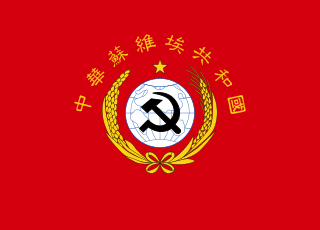
The Chinese Soviet Republic (CSR) was a state within China, proclaimed on 7 November 1931 by Chinese Communist Party (CCP) leaders Mao Zedong and Zhu De in the early stages of the Chinese Civil War. The discontiguous territories of the CSR included 18 provinces and 4 counties under the communists' control. The CSR's government was located in its largest component territory, the Jiangxi Soviet. Due to the importance of the Jiangxi Soviet in the CSR's early history, the name "Jiangxi Soviet" is sometimes used to refer to the CSR as a whole. Other component territories of the CSR included the Northeastern Jiangxi, Hunan-Jiangxi, Hunan-Hubei-Jiangxi, Hunan-Western Hubei, Hunan-Hubei-Sichuan-Guizhou, Eyuwan, Shaanxi-Gansu, Sichuan-Shanxi, and Haifeng-Lufeng Soviets.

The Nationalist government, officially the National Government of the Republic of China, also known as the Second Republic of China or simply as the Republic of China, refers to the government of the Republic of China from 1 July 1925 to 20 May 1948, led by the Kuomintang.

The Government of the Republic of China is the national government of the Republic of China (ROC) whose de facto territory currently consists of Taiwan, Penghu, Kinmen, Matsu, and other island groups in the "free area". Governed by the Democratic Progressive Party (DPP) since 2016, the president is the head of state. The government consists of the presidency and five branches (Yuan): the Executive Yuan, Legislative Yuan, Judicial Yuan, Examination Yuan, and Control Yuan.
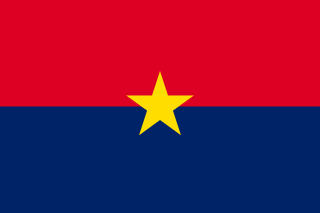
The Fujian People's Government, officially the People's Revolutionary Government of the Republic of China, was a short-lived anti-Kuomintang government that established a socialist state in the Republic of China's Fujian Province. It lasted between 22 November 1933 and 13 January 1934. The rebellion that led to its formation and its collapse are known as the Fujian Incident or Fujian Rebellion.
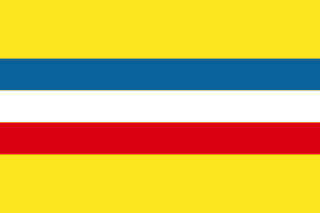
The Young China Party (YCP), also known as the Chinese Youth Party (CYP), is a minor political party in Taiwan. It was one of the three legal political parties in Taiwan during the martial law period from 1949 to 1987, the other two being the Kuomintang and the China Democratic Socialist Party. The YCP was an important political party during the early history of the Republic of China, when its government was based on the mainland.

Dayuanshuai was a Chinese military rank, usually translated as grand marshal or generalissimo.

Dang Guo was the one-party system adopted by the Republic of China under the Kuomintang, lasting from 1924 to 1987. It was adopted after Sun Yat-sen acknowledged the efficacy of the nascent Soviet Union's political system, including its system of dictatorship. Chiang Kai-shek later used the Kuomintang to control and operate the National Government of the Republic of China (ROC) and the National Revolutionary Army. All major national policies of the government bureaucracy were formulated by the Kuomintang, giving the party supreme power over the whole nation. Following the beliefs of Sun Yat-sen, political power should have been returned to the people after the National Revolutionary Army militarily ended the Warlord Era. However, martial law in the ROC continued from 1949 until 1987, during which other political parties were banned. Martial law was lifted in 1987 by President Chiang Ching-kuo, a move that legalized other political parties such as the Democratic Progressive Party and ended the Dang Guo.

The national flag of the People's Republic of China, also known as the Five-star Red Flag, is a Chinese red field with five golden stars charged at the canton. The design features one large star, with four smaller stars in an arc set off towards the fly. It has been the national flag of China since the foundation of the People's Republic of China on 1 October 1949. The flag was designed by Zeng Liansong.
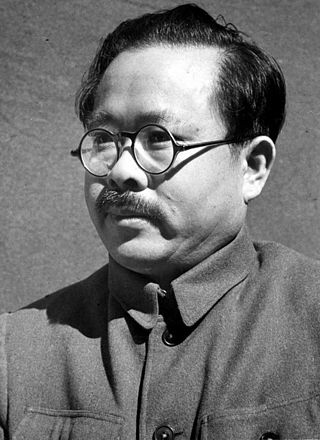
Ren Bishi was a military and political leader in the early Chinese Communist Party (CCP).
Mao Zuquan was a Chinese politician of the Republic of China (1912–49), before the Republic of China government relocated to the island of Taiwan in 1949.

The Republic of China (ROC), commonly known simply as China, was a sovereign state based on Mainland China from 1912 to 1949 prior to the Government of the Republic of China's relocation to Taiwan, where it continues to be based today. The ROC was established on 1 January 1912 during the Xinhai Revolution against the Qing dynasty. On 7 December 1949, the ROC's government ruled by the Kuomintang was moved from Nanjing to Taipei following the KMT's de facto defeat by the Chinese Communist Party (CCP) in the Chinese Civil War. The CCP-led People's Republic of China (PRC) was established in mainland China upon its official proclamation on 1 October 1949, while the ROC retains actual control over the Taiwan Area with the political status of Taiwan remaining in dispute to this day.

Communist-controlled China or the Revolutionary Base Area, officially called the Soviet Zone from 1927 to 1937, and the Liberated Zone from 1946 to 1949, was the part of the territories of China controlled by the Soviet-backed Chinese Communist Party (CCP) from 1927 to 1949 during the Republican era and the Chinese Civil War with Nationalist China.

The Huairen Hall or Huairentang is a building inside Zhongnanhai, the Chinese government's leadership compound in Beijing. It has been the site of several major events in Chinese history. Huairen Hall is the main meeting place of the Politburo of the Communist party of China and an alternate meeting place of the Standing Committee. The building is also the meeting location of several of the Communist Party's leading groups such as the Financial and Economic Affairs Leading Group and the Leading Group for Comprehensively Deepening Reforms.

The Wuhan Nationalist government, also known as the Wuhan government, Wuhan regime, or Hankow government, was a government dominated by the left-wing of the Nationalist or Kuomintang (KMT) Party of China that was based in Wuhan from 5 December 1926 to 21 September 1927, led first by Eugene Chen, and later by Wang Jingwei.
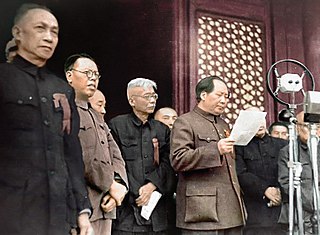
The founding of the People's Republic of China was formally proclaimed by Mao Zedong, the Chairman of the Chinese Communist Party (CCP), on October 1, 1949, in Tiananmen Square in Beijing. The government of a new state under the CCP, formally called the Central People's Government, was proclaimed by Mao at the founding ceremony.

Qu Wu was a Chinese military officer and politician, who most notably served as chairman of the Revolutionary Committee of the Chinese Kuomintang, Vice Chairman of the Chinese People's Political Consultative Conference, deputy secretary-general of the National People's Congress, deputy secretary-general of the Central People's Government and vice chairman of the Committee of Foreign Cultural Relations.
Hou Jingru was a Chinese army officer and politician, prominent member of the Revolutionary Committee of the Chinese Kuomintang. He notably served as Vice Chairman of the Chinese People's Political Consultative Conference, Counsellor of the State Council, member of the Central Military Commission and President of the China Association for the Promotion of Peaceful Reunification.
Zhang Chong was a Chinese military and political leader. Initially a feared bandit chieftain and warlord of Yunnan, he distinguished himself as commander of the 50th Army during the Sino-Japanese War, then joined Mao Zedong and the Communists during the Chinese Civil War and went on to hold important positions in the new People's Republic of China, culminating in his service as Vice Chairman of the Chinese People's Political Consultative Conference.
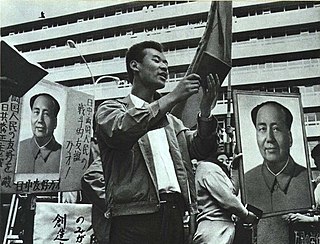
Mao Zedong, the longtime Chairman of the Chinese Communist Party and the founder of the People's Republic of China, was reported to have expressed his gratitude to the Japanese military and political figures who visited China in the 1950s and 1970s. Mao said that the Japanese invasion of China had united Chinese people and allowed the Chinese Communist Party to win the Chinese Civil War. In the 21st century, these remarks by Mao caused strong reactions on the internet in China. With the 2020 Hong Kong Diploma of Secondary Education Examination (HKDSE) history subject controversy on the historical understanding of Japan's invasion of China, these remarks have returned to the spotlight on Hong Kong and mainland Chinese websites. The word "thanks" expressed by Mao has been also interpreted by some observers as dark humour.